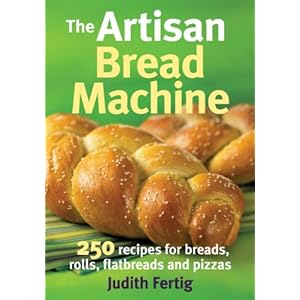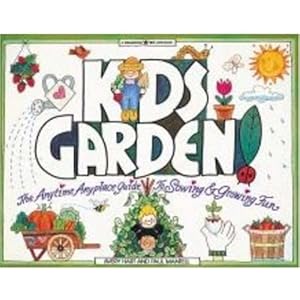I started with the beds. I built 3 triangle beds of cedar. Lowe's carries cedar, but Home Depot doesn't. My husband mentioned that you can use other hard woods. Cedar is advantageous though for two reasons--1) it's cheaper (a lot!) than the other hard woods like poplar and Oak that they carry. 2) the smell of the cedar is unappealing to termites.
This bed I added on to my long rectangular bed.
I did have to run out to get more stakes to put around one of the beds but when I was finished, my triangle beds looked like this:
I know triangle beds are probably not the most economically wise use of the boards based on square foot of gardening space, but I made them in triangles instead of squares because my hope is that they will be easier for the kids to garden in and reach the center of. The line down the middle is because one side belongs to each girl--it is their garden...to plant, to weed, to water, and to care for...
I also planted the plants waiting to be planted.
I planted the azaleas around the rose bush hoping that it will keep little ones from touching the thorns of the rose bush. I did forget to check the companion gardening book. I hope the combination will be okay. They are a partial sun flower which should work well in this spot, but will need a lot of water in the summer as it gets hot.
My raspberries are now planted. They're bush raspberries, not trellised ones, so they look a little different.
The last thing I did was fix the non-existent border on the side of our house.
I transplanted some bulbs (which are flopping down because they need to take root and get watered), an azalea bush, a hosta, and put a brick border in. This is a funny spot sun wise. So, although it is partial sun, it gets really hot in the summer so we'll see if the hosta and azalea make it. There is another azalea nearby so I am hopeful. If it doesn't, I'll try something else (a plant that needs and tolerates more sun). I put in the bricks. I bought simple plain bricks for 44 cents each. I was amazed at how much just adding the line of bricks helped. It defined the area.
Gardening and landscaping, I've discovered are very expensive especially when you're beginning and you need so much. What I've been trying to do with my garden is be as economical as I can and spread out the cost.
Two years ago, I planted perennials in my front flower bed. That was my first dabbling. I highly recommend planting strawberries if they grow in your area because they've been super easy to grow. The kids have loved picking of a few strawberries and watching the flowers bloom and then the strawberries develop. They multiply and you only need to invest in a plant or two. I think I bought 1 for the front bed the first year and 2 more the second year. They now fill the flower bed which is probably 10 feet long.
Last year, we put in the fence, pebble walkway, brought in a load of dirt to raise the level near the house, put in the trellis and two square raised beds.
This year I've added more raised beds, put in borders, bought a few more plants, bought more pebbles, and am hopefully going to build a compost bin next month.
Dirt Cheap Green Thumb talked about picking plants that are right for your cold hardiness zone and the sun that the area receives where you're planting. Taking these two things into mind will save you a lot of money. I have found this to be true. The plants that haven't survived or haven't thrived weren't really the best plants to put in those areas. I did lose my oregano last year to a disease, but I had that happen to another friend after her oregano was a few years old like mine. I never used it, so I'm not going to replant it. That was another tip I read and agreed with--plant things you're going to eat. Something might sound appealing, but it isn't worth it if you won't use it. I planted 3 herbs last year that I did nothing with. I have a huge lemon balm plant outside that I have no idea what to do with! It does look beautiful though.
I've realized a few things this week about gardening.
1) Start out small. It's a lot more work than it looks like--to build it and take care of it. I've been sore and tired after only a few hours of work!
2) Small is doable. A pot or adding a plant to a bed that's already made.
3) Plant a strawberry first.
4) If you have kids, get Kids Garden! and try one of their easy projects first. The book has lots of indoor and outdoor projects. You can start gardening indoors and then move outdoors. I'm learning, hopefully. My girls have loved watching the geraniums grow in their room that we brought home from Longwood Gardens at a free children's activity. Plants in your home are also good for the air quality in your house.
5)It's not as intimidating as it seems if you haven't gardened before. Map the sun through the day in the area where you're going to plant. Note if it drains well but also gets watered. Pick plants based on how much sun the area gets. Put tall plants in back and short ones in front (think about shadows from plants onto other ones). Kids Garden! is the best book I found for explaining how to plant a plant. Kids books are just simpler than adult books. Water it in a bit after you plant it and then keep an eye on it. Weed as needed. Water as needed. And enjoy watching it grow! And last but not least, don't think that if it doesn't grow that you have a brown thumb. Some or all of your plants may grow. But, some may not. Just start back at the beginning. Think about why you think it might not have grown and try something else in that spot that might work better.
I'll keep you posted as things grow and as we plant...
I'll also keep you posted on our composting efforts...
PS. The best part of my gardening efforts this year is that last week, my husband commented about how horrible our yard looked (due to our dog digging everywhere) and the garden hadn't had a makeover yet. When I took him out to see the final results of my efforts this week, he was pleased with the way the garden looks now. He suggested putting vining plants around the fence instead of a shrub in the corner and I think it's a great idea. He would like to help me plant and build the compost bin. I think it was daunting to him how much needed to be done before I'd started.













